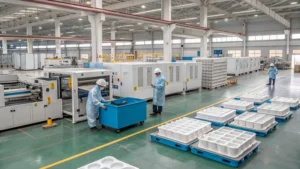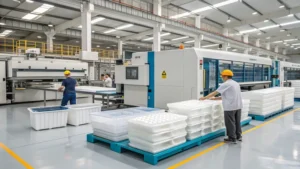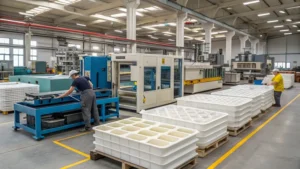
Colored plastics are ubiquitous in modern manufacturing, from automotive parts to consumer packaging. However, working with these materials presents unique challenges that can impact production efficiency, cost, and sustainability. This article explores the multifaceted difficulties associated with colored plastics, providing a comprehensive guide for professionals navigating this complex landscape.
Working with colored plastics introduces challenges in color consistency1, material compatibility2, and recyclability, affecting industries like automotive and packaging where aesthetics and branding are crucial.
Delving into these challenges reveals the intricate balance between achieving desired visual appeal and maintaining functional integrity. Understanding these aspects is key to optimizing production processes and meeting industry standards.
Colored plastics are more difficult to recycle than clear plastics.True
Colorants can complicate the recycling process, often requiring additional steps to separate or neutralize pigments, which can increase costs and reduce efficiency.
All colored plastics behave the same way during processing.False
Different colorants and plastic types interact uniquely, affecting processing parameters like temperature and pressure, leading to varied outcomes.
- 1. What Are Colored Plastics and How Are They Classified?
- 2. How Do Colored Plastics Impact Application Scenarios and Decision-Making?
- 3. What Are the Technical Challenges in Processing Colored Plastics?
- 4. How Can Professionals Overcome the Challenges of Colored Plastics?
- 5. What Technologies Are Related to Colored Plastics?
- 6. Conclusion
What Are Colored Plastics and How Are They Classified?
Colored plastics are polymer materials that have been tinted using pigments or dyes to achieve specific hues, enhancing their aesthetic appeal and functional properties for various applications.

Colored plastics are polymers infused with colorants like pigments or dyes, classified by type (thermoplastics, thermosets), colorant (pigments, dyes), and application (automotive, packaging), impacting their processing and use.
| Classification Type | Examples | Notes |
|---|---|---|
| By Plastic Type | Thermoplastics, Thermosets | Affects processing methods |
| By Colorant Type | Pigments, Dyes | Influences color stability |
| By Application | Automotive, Packaging, Consumer Goods | Determines specific requirements |
Definitions and Core Principles
Colored plastics, also known as pigmented polymers or dyed plastics, are materials where color is integrated into the plastic matrix during manufacturing. The core principle involves dispersing colorants—either pigments (insoluble particles) or dyes (soluble substances)—into the polymer to achieve the desired color. This process must ensure that the colorant is compatible with the plastic type and withstands processing conditions without degrading.

Classification of Colored Plastics
Colored plastics can be classified based on several criteria:
-
By Type of Plastic:
-
Thermoplastics (e.g., polyethylene, polypropylene) can be melted and reshaped, making them versatile for various applications.
-
Thermosets (e.g., epoxy resins) harden permanently after curing, offering durability but limited recyclability3.
-
-
By Colorant Type:
-
Pigments are used for opaque or translucent colors and are common in polyolefins.
-
Dyes provide transparent colors and are suitable for polycarbonates and acrylics.
-
-
By Coloring Method:
- Internal coloring involves mixing colorants into the plastic before molding, ensuring uniform color throughout.
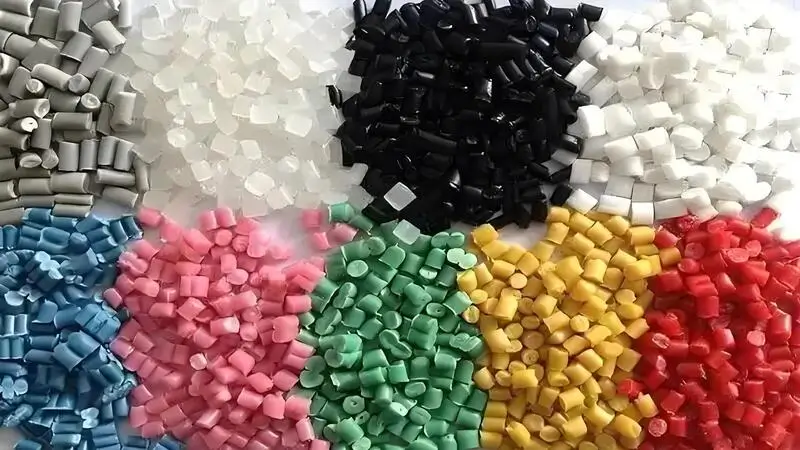
- External coloring includes methods like painting or coating, which can be less durable.
-
By Application:
-
Automotive: Requires durable, weather-resistant colors for interior and exterior components.
-
Packaging: Focuses on vibrant, consistent colors for branding and consumer appeal.
-
Consumer Goods: Demands safe, non-toxic colorants for products like toys and electronics.
-
These classifications help in selecting the appropriate colored plastic for specific needs, balancing aesthetic requirements with functional performance.
Pigments are always better than dyes for coloring plastics.False
The choice between pigments and dyes depends on the application; pigments offer opacity, while dyes provide transparency, each with distinct advantages.
Thermoplastics are more recyclable than thermosets.True
Thermoplastics can be remelted and reformed, facilitating easier recycling compared to thermosets, which cannot be reshaped once cured.
How Do Colored Plastics Impact Application Scenarios and Decision-Making?
Colored plastics are pivotal in industries where visual appeal and branding are as crucial as functionality, influencing material choice and production strategies.

Colored plastics are essential in automotive and packaging for aesthetics and branding, but pose challenges in consistency and recyclability compared to alternatives like clear plastics or metals.
Typical Application Scenarios
Colored plastics are widely used across various sectors:
-
Automotive:
-
Interior Components: Dashboards, seats, and trims require consistent, durable colors to match vehicle aesthetics.
-
Exterior Parts: Bumpers and panels need weather-resistant colors for long-term appeal.
-
-
Packaging:
- Food Containers: Vibrant colors enhance shelf appeal and brand recognition.

- Cosmetic Packaging: Luxurious colors convey premium quality.
-
Consumer Goods:
-
Toys: Bright, safe colors attract children and meet safety standards.
-
Electronics: Sleek, modern colors align with tech trends.
-
These scenarios demand precise color matching and stability, making the choice of colorant and plastic type critical.
Pros and Cons Comparison
Comparing colored plastics to alternatives like clear plastics or metals highlights their advantages and limitations:

-
Pros:
-
Aesthetic Versatility: Wide range of colors and finishes.
-
Lightweight: Reduces overall product weight, beneficial in automotive and packaging.
-
Cost-Effective: Generally cheaper than metals for similar applications.
-
-
Cons:
-
Color Consistency: Harder to maintain across batches compared to clear plastics.
-
Recyclability: Colorants can complicate recycling, unlike clear plastics.
-
Durability: May fade or degrade faster than metals in harsh environments.
-
These factors influence decision-making, requiring a balance between visual appeal and practical considerations.
Colored plastics are always more expensive than clear plastics.False
While colorants add cost, the overall expense depends on the specific application and production scale.
Colored plastics offer better UV resistance than metals.False
Metals generally have superior UV resistance, while colored plastics may require additives to enhance durability.
What Are the Technical Challenges in Processing Colored Plastics?
Processing colored plastics involves navigating a complex workflow where color consistency, material compatibility, and processing parameters must align to achieve the desired outcome.

Processing colored plastics requires precise control over colorant dispersion4, temperature, and pressure to ensure uniform color and material integrity, impacting industries like automotive and packaging.
Process Full Workflow Breakdown
The workflow for processing colored plastics includes several critical steps:
-
Material Selection:
- Choose the base plastic (e.g., polyethylene, polycarbonate) based on application requirements.

- Select compatible colorants (pigments or dyes) that withstand processing conditions.
-
Compounding:
-
Mix colorants with the plastic using methods like masterbatching or direct compounding.
-
Ensure even dispersion to avoid color streaks or inconsistencies.
-
-
Processing:
- Use techniques such as injection molding, extrusion, or blow molding.

- Control temperature and pressure to prevent colorant degradation or uneven distribution.
-
Quality Control:
-
Employ color measurement tools5 like spectrophotometers to verify color accuracy.
-
Check for defects like color variation or surface imperfections.
-
-
Post-Processing:
-
Cool and shape the product, ensuring the color remains stable.
-
Conduct final inspections to meet industry standards.
-
Key parameters include the melting temperature of the plastic, the decomposition temperature of the colorant, and the mixing time for uniform dispersion.
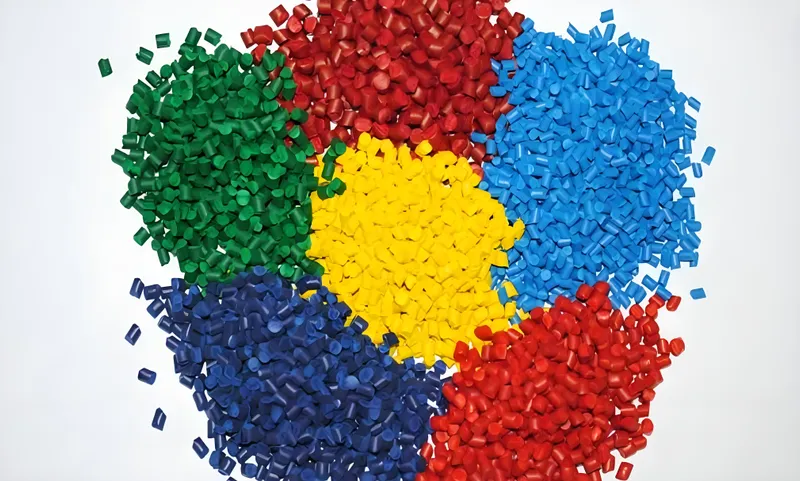
Material Compatibility Explanation
Different plastics require specific colorants due to their chemical properties:
- Polyolefins (e.g., PE, PP): Best suited for pigments, which provide opacity and stability.

-
Polycarbonates and Acrylics: Compatible with dyes for transparent, vibrant colors.
-
PVC: Requires colorants that can withstand its processing temperatures and chemical reactivity.
Incompatible colorants can lead to issues like color bleeding6, reduced mechanical strength, or processing difficulties, underscoring the importance of material compatibility.
All colorants are compatible with any plastic type.False
Colorants must be specifically chosen to match the chemical and thermal properties of the plastic to avoid degradation or poor performance.
Precise temperature control is crucial in processing colored plastics.True
Temperature affects colorant stability and dispersion, directly impacting the final product's color quality and consistency.
How Can Professionals Overcome the Challenges of Colored Plastics?
Navigating the complexities of colored plastics requires practical tools and strategies to ensure successful outcomes in production and application.
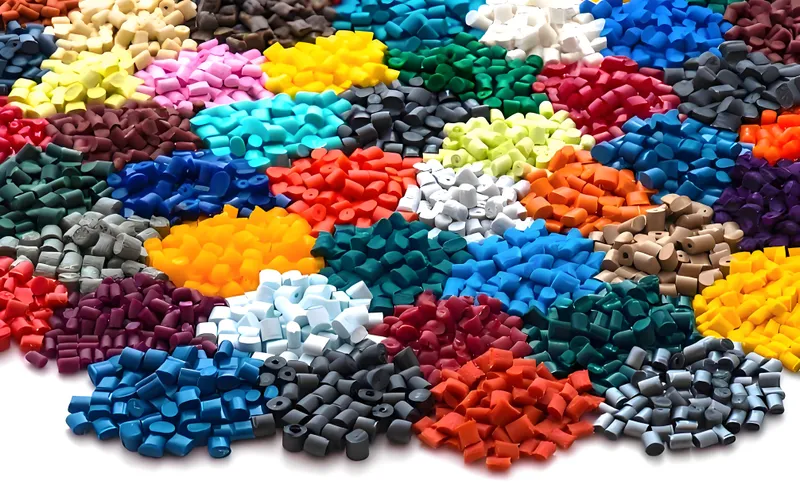
Professionals can overcome challenges with colored plastics by using design checklists for process limitations and decision-making guides for material and colorant selection, enhancing efficiency and quality.
Design Checklist for Process Limitations
To mitigate risks, consider the following checklist:
-
Verify Colorant Compatibility: Ensure the colorant is suitable for the chosen plastic type.
-
Check Processing Temperatures: Confirm that the colorant can withstand the required heat without degrading.
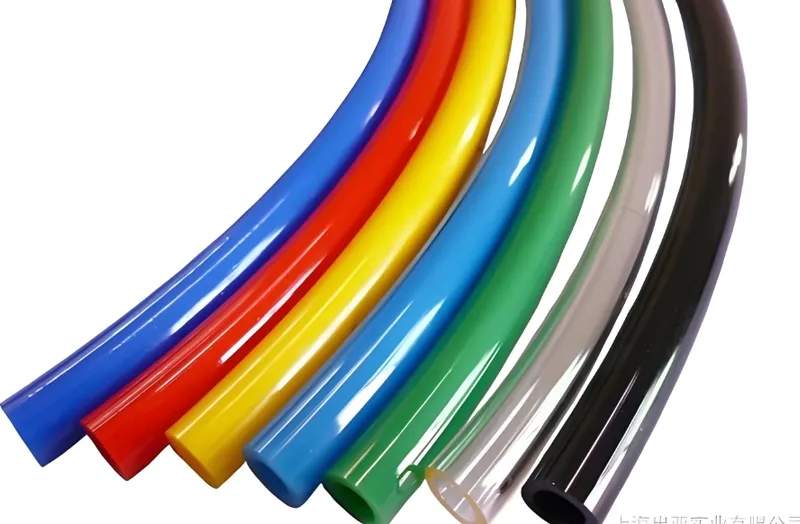
-
Ensure Uniform Dispersion: Use appropriate mixing techniques to avoid color inconsistencies.
-
Monitor Color Stability: Test for color fading or changes under expected environmental conditions.
-
Assess Recyclability: Consider the impact of colorants on the plastic's ability to be recycled.
This checklist helps in preempting common issues, ensuring smoother production processes.
Process Selection Decision-Making
Choosing the right process involves:

-
Internal vs. External Coloring:
-
Internal Coloring: Best for uniform color and durability.
-
External Coloring: Suitable for surface aesthetics but may be less durable.
-
-
Coloring Method:
-
Masterbatching: Cost-effective for large runs but requires precise formulation.
-
Direct Compounding: Offers flexibility for small batches but can be less consistent.
-
A simple decision tree can guide selection:

-
Is uniform color throughout the part necessary?
-
Yes → Internal Coloring
-
No → External Coloring
-
-
Is the production volume large?
-
Yes → Masterbatching
-
No → Direct Compounding
-
This approach simplifies decision-making, aligning choices with production needs.
Masterbatching is always the best method for coloring plastics.False
While cost-effective for large volumes, masterbatching may not be suitable for small batches or when flexibility is needed.
A design checklist can significantly reduce production errors.True
By preemptively addressing potential issues, a checklist helps in maintaining quality and efficiency.
What Technologies Are Related to Colored Plastics?
Understanding the ecosystem of technologies surrounding colored plastics provides a holistic view, aiding in better integration and innovation.

Related technologies to colored plastics include plastic manufacturing, colorant production, and recycling processes, forming a network that impacts production and sustainability.
Upstream and Downstream Technologies
-
Upstream:
-
Plastic Manufacturing: The production of base polymers like polyethylene or polypropylene.
-
Colorant Production: Development of pigments and dyes tailored for specific plastics.
-
-
Downstream:
-
Product Design and Branding: Utilizing colored plastics for aesthetic and functional purposes.
-
Recycling: Processes to reclaim and reuse colored plastics, often complicated by colorants.
-
Complementary and Alternative Technologies
-
Complementary Technologies:
- Color Measurement Systems: Tools like spectrophotometers ensure color accuracy.

- Additive Manufacturing: 3D printing with colored plastics for prototyping and production.
-
Alternatives:
-
Natural Materials: Wood, glass, or metals, each with distinct coloring methods.
-
Clear Plastics: Used when color is not a priority, offering easier recyclability.
-
Navigating these technologies helps in optimizing the use of colored plastics and exploring innovative solutions.
Advancements in colorant technology can improve the recyclability of colored plastics.True
New colorants designed to be easily separated or neutralized can enhance recycling efficiency.
3D printing with colored plastics is limited to prototyping.False
3D printing is increasingly used for final production, especially in custom or small-batch manufacturing.
Conclusion
Navigating these technologies helps in optimizing the use of colored plastics and exploring innovative solutions. Working with colored plastics involves navigating a complex landscape of technical, economic, and environmental challenges. From ensuring color consistency and material compatibility to addressing recyclability7 concerns, professionals must balance aesthetic demands with functional requirements. By leveraging design checklists, decision-making guides, and an understanding of related technologies, manufacturers can optimize their processes and achieve high-quality, sustainable products.
-
Understanding color consistency challenges is crucial for ensuring quality in manufacturing colored plastics. Explore this link for in-depth insights. ↩
-
Material compatibility is vital for the performance of colored plastics. Discover more about its impact on production processes. ↩
-
Recyclability is a key concern for sustainability in plastics. Learn about the challenges and solutions in this area. ↩
-
Understanding colorant dispersion is crucial for achieving uniform color in plastics, impacting quality and aesthetics. ↩
-
Explore advanced color measurement tools to ensure accuracy in colored plastics production, enhancing quality control and consistency. ↩
-
Learn about the causes of color bleeding and effective prevention strategies to maintain product quality in colored plastics. ↩
-
Exploring recyclability factors is essential for sustainable practices in plastic production, impacting environmental responsibility. ↩



